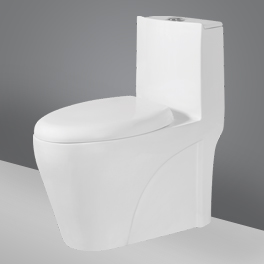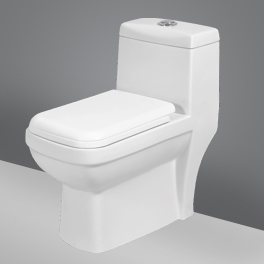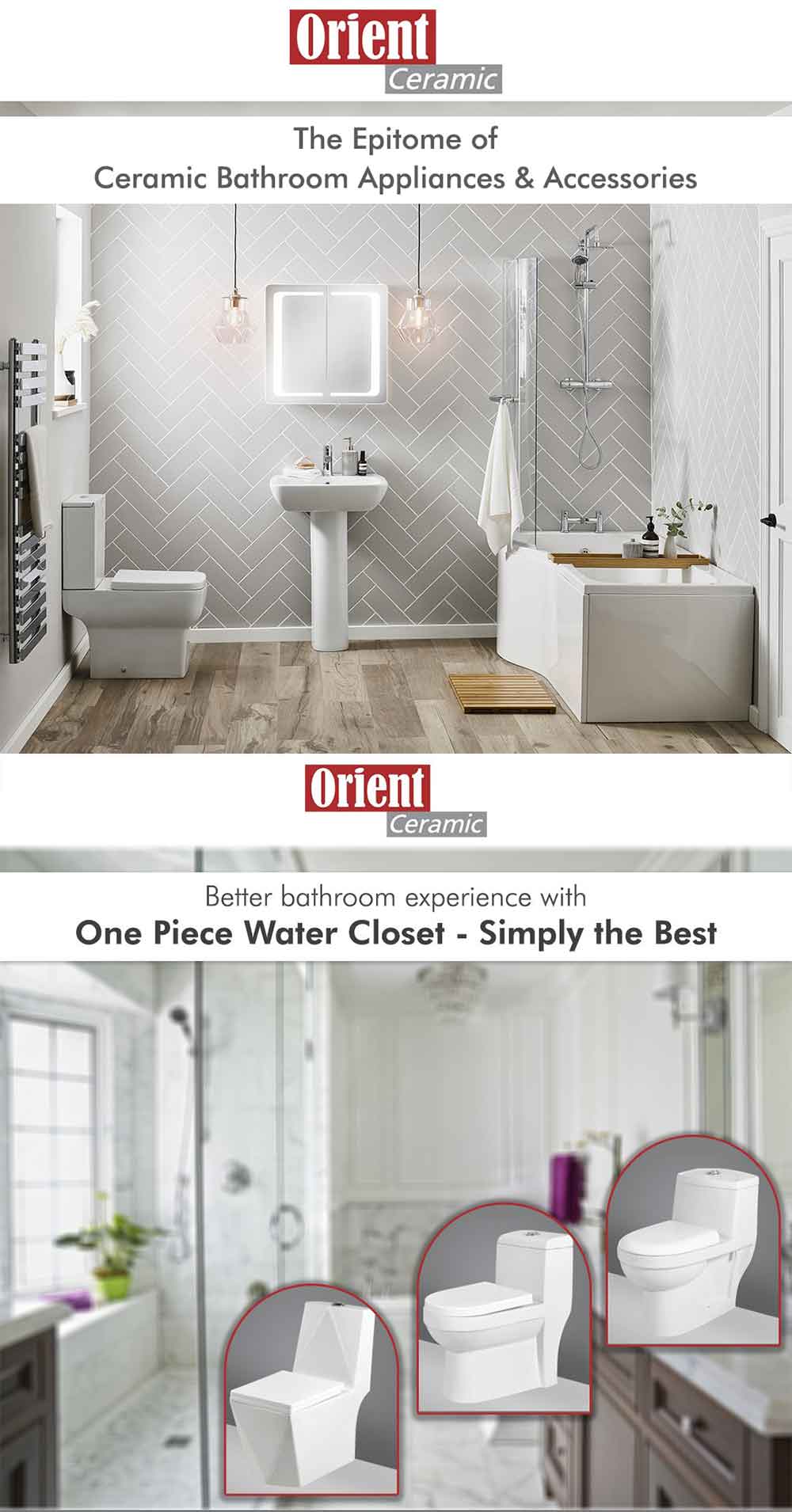
What is the Ceramic Toilet Manufacturing Process? There are many benefits of ceramic toilets, such as durability and hygienic properties. And, they're fire resistant. In this article, we'll explore some of the specific steps of the manufacturing process followed by Sanitary ware manufacturers in India. Afterwards, you'll be able to buy one for your home. Ultimately, you'll be able to enjoy one of the most durable toilets available. After reading this article, you'll know why ceramic toilets are so appealing.
Ceramic Toilets are Durable
There are several important factors to consider when choosing a toilet from a reliable Sanitary ware manufacturers and exporters in India. One of these factors is the overall size of the toilet, as this can limit where it can be installed. In addition, some toilets have advanced features, such as touchless flushing, night lights, bidet capabilities, and more. Although these features may increase the initial price of the toilet, they do not increase maintenance costs over the life of the fixture.
When choosing a toilet, ceramic is an excellent choice. The ceramic itself is highly durable, with many good reviews available. It is also much easier to clean than plastic or fibreglass toilets. Lastly, a ceramic toilet bowl is resistant to rust, making it a good choice for places with particularly hard water. Considering all of these benefits, choosing a ceramic toilet may be the best choice for you. Once you've decided on a model, the next step is choosing the colour.

How to Clean Ceramic Toilets?
To clean ceramic toilets, you can use a disinfectant spray. To make sure that you don't damage your toilet, spray the head of the brush with a disinfectant spray and place it into the bowl. Wipe off the excess spray with a paper towel. Don't forget to discard your used towel. Then, use a new, clean one to wipe the toilet. You'll be pleased to know that ceramic toilets are easy to clean!
A clean ceramic toilet will make your bathroom look more inviting and cleaner. Since they're nonporous, they're also easier to clean. A regular cleaning regimen will prevent the build-up of minerals and prevent your toilet from looking dull and dirty. To clean your toilet and fixtures, you can use a commercial cleaner or make a homemade solution. For best results, try to scrub them once a week. Then, you can apply a disinfectant or a toilet cleaner to the bowl.
A simple solution to stubborn stains is a combination of pumice stone and vinegar. The first ingredient, vinegar, is bleach, which may cause a toxic gas. When mixed, however, vinegar and baking soda produce a chemical reaction that can help remove stubborn stains. If you're not careful, you could ruin the porcelain finish. A few times a week, you should be able to clean your toilets in about an hour.

Why Ceramic Toilets are Hygienic?
A ceramic toilet is one of the safest and hygienist ways to toilet-clean. Its smooth, non-porous surface prevents stains and is naturally durable. The anti-bacterial treatment helps ensure better hygiene. Hygienic ceramic is not only aesthetically pleasing, but it also protects against bacteria and germs. The best part is that it is completely free of harmful chemicals. Advanced technology has made it possible for ceramic toilets to be made even more hygienic. New antibacterial ceramic glazes are now available that are not just surface coating. They are made with a zinc-tin mix integrated into the glass matrix during the manufacturing process. The glaze covers the entire toilet, from the interior to the rim. It is especially effective in areas that are prone to the accumulation of bacteria. The ceramic is also coated with a layer of Aqua Ceramic, which allows water to penetrate between germs and debris. The Hygiene Glaze kills 99.9 per cent of bacteria within 24 hours.
The ceramic sanitary ware is easy to clean. Simply use water and a mild detergent and a soft sponge to scrub away stains. Natural products are a good choice when lime stains are an issue.
Are Ceramic Toilets Fire Resistant?
Yes, a ceramic toilet is a good choice for a home because it is both fire-resistant and hygienic. Because bathrooms are exposed to water all the time, they are prone to the growth of bacteria and mould. Unlike other materials, however, ceramic is naturally resistant to both heat and bacteria. Its fire resistance is enhanced by its thickness, which means it won't contribute to the spread of a fire.
Ceramics is also eco-friendly, as it's made from natural materials and is therefore recyclable. In addition, ceramic is strong and durable, making it ideal for everyday use. It's also easy to clean and does not harbour dust or dander. When it comes to the look of your toilet, you can't go wrong with ceramic. Ceramics is also very inexpensive, making it a smart choice for any bathroom. It's also available in many styles.
Ceramic Toilets are Porous
While porcelain is the most common material used in toilets, ceramics are also the most durable and affordable. Porcelain is water resistant, durable, and sanitary. Porcelain is a composite material made from four primary ingredients: clay, sand, and limestone. This material is then fired in a kiln and covered with a glaze. The coating prevents water from penetrating the porcelain. Porcelain is also quite beautiful and aesthetically pleasing.
Porcelain is also much easier to clean and maintain. Porcelain is a good choice for high-traffic areas in your home because porcelain toilets can withstand a lot of weight.
Porcelain is an inexpensive option for bathroom toilets and can be painted to match the aesthetic of your bathroom. They are also easy to clean and come in a variety of colours. Porcelain is also molded to create comfortable shapes. As with any bathroom appliance, it is important to consider the porousness of porcelain before purchasing it. These materials are also easy to clean. If you're concerned about the quality of your bathroom's plumbing, you can purchase porcelain toilets.
Ceramic Toilets are Made of Porcelain
Porcelain is an excellent choice for toilets. It is resistant to water and germs. Because of this, porcelain is the only material capable of providing full protection from liquid water. It is composed of four basic ingredients: alumina, feldspar, calcium carbonate, and bismuth. Porcelain is highly resilient and non-porous. It is also aesthetically pleasing and durable, making it a great choice for toilets. Porcelain can also be used to create bowls, vases, and other decorative items.
Porcelain is made from a combination of silicate materials and clay. This mixture is then kiln-baked to perfection, and the result is a durable, easy-to-clean material. Because porcelain is impervious to water, it does not wear easily and does not stain as easily. Porcelain is also more affordable than marble, requires less maintenance, and is waterproof. Whether you choose porcelain or another material, you'll be pleased with the result.
Best Ceramic Toilets are made at Orient Ceramics
The ceramic toilets manufactured in Orient Ceramics one of the leading Sanitaryware exporters in India, are of high quality and durability. The glazing method makes this porcelain durable and shiny. The clay is formed into a mould and fired in a kiln to make it hard and durable. The final product is glazed and then packaged to protect it from the elements.
To create ceramic toilets, a special process is used to make the pieces. First, the clay is sieved before entering the tank. After the mould is cast, it is sent to a kiln where it is fired to a residual temperature. After it is fired, the ceramic product is left to dry, in some cases up to 80%. The final product is then shaped like a toilet. Then, casting workers to inspect the pieces for cracks and other deformities. After firing, each piece is individually tested for quality and durability. Random sample checks are not good indicators of quality. Cracks in the toilet piece can be detected by the hard rubber ball test. A cracked piece will give off a dull noise.
In Conclusion
In the early days of the toilet, porcelain toilets were made in vibrant colours such as pink and purple. However, this trend shifted in the 1970s. Most toilets today are white as they leave no room for dirt and grime. This feature makes porcelain toilets easy to clean. They are also resistant to heat, water, and corrosion. In addition, these toilets are also waterproof. There is no need to worry about the leakage of your porcelain toilet anymore!

Make an Appoinment
Send us Message
Visit us at Address
Vagadiya Road, Thangadh - 363530,
Gujarat, India.
Gujarat, India.
© Copyright 2024, Orient Ceramics, All Rights Reserved.
Web Design & Development by Opal Infotech